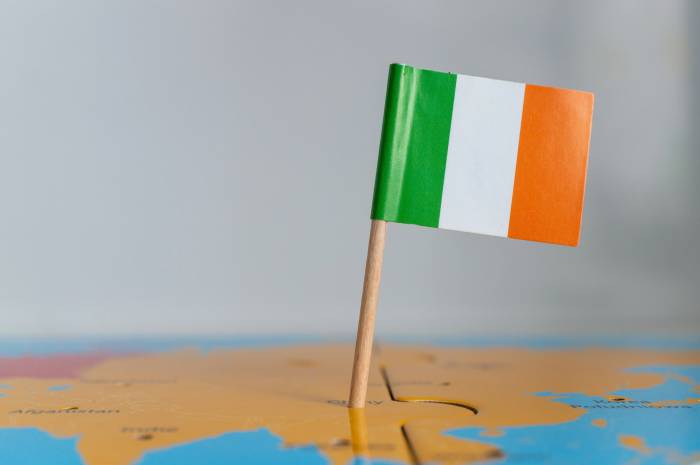France Surges 87.8% in Irish Wine Imports, Overtaking Chile as Top Supplier in 2025
Market consolidation intensifies as top three countries capture 55% of value, with sparkling wine imports up nearly 59%
2025-10-14

Ireland’s wine import market showed significant changes in the first half of 2025, according to a new report published by the Interprofessional Wine Organization of Spain (OIVE). The report, based on Irish Customs data, provides a detailed analysis of the country’s wine import trends, supplier dynamics, and pricing shifts for the period January to June 2025.
In H1 2025, Ireland imported €165 million worth of packaged wines, representing an 8.9% increase compared to the same period in 2024. The total volume of packaged wine imports reached 43.04 million liters, up 13.5% year-on-year. Packaged wines—encompassing sparkling, bottled, and bag-in-box formats—continue to dominate Ireland’s wine import portfolio, accounting for nearly all value and volume. Bulk wine remains a small segment at just €1.27 million in value and 0.29 million liters in volume, though it saw a notable price increase per liter.
Sparkling wine was the fastest-growing category in H1 2025. Imports surged to €16.7 million (+34.9%) and 3.44 million liters (+58.9%). However, the average price per liter for sparkling wine dropped by 15% to €4.86, suggesting that much of the growth came from lower-priced products or increased promotional activity.
Bulk wine imports, while still minor in overall share, rose by 25.8% in value and 4.7% in volume. The average price per liter for bulk wine jumped to €4.37—a 20% increase over last year—making it more expensive than bottled wine on average during this period. This unusual price dynamic may reflect specific high-value shipments or concentrated products within a small base.
France emerged as Ireland’s leading supplier by both value and volume in H1 2025. French wine exports to Ireland reached €40.1 million (+37.6%), capturing 24.1% of the market’s import value and nearly doubling its volume to 8.5 million liters (+87.8%). This marks a significant shift from previous years when Chile held the top position.
Chile remained a key supplier with €26 million in export value (+1%) and matched France’s volume at 8.5 million liters (+8.8%). However, Chile’s market share slipped slightly as its growth lagged behind France and Italy.
Italy also strengthened its position with €25.1 million in exports (+18.4%) and 7.9 million liters (+15%), now holding about 15% of both value and volume shares.
New Zealand continued to perform well, exporting €17.8 million worth of wine (+16.7%) at an average price of €5.29 per liter—the highest among major suppliers—reflecting its focus on premium varietals such as Sauvignon Blanc.
Spain rounded out the top five suppliers with €15.5 million in export value (flat growth) and about 3.3 million liters in volume (down from previous years), indicating a shift toward higher-priced Spanish wines in Ireland.
Other notable suppliers included Australia (€12.5 million), Netherlands (€7.1 million), USA (€5.7 million), UK (€5.1 million), and Argentina (€3.7 million). Most of these countries saw either modest growth or declines in export value compared to H1 2024.
The report highlights that some countries like the Netherlands and UK act as re-export hubs rather than primary producers, meaning that wines recorded as imports from these countries may have originated elsewhere.
Average import prices shifted notably across categories and countries of origin during H1 2025. The mean price for packaged wine was €3.83 per liter (down 4.1% year-on-year). Sparkling wine prices fell sharply due to increased volumes of lower-cost products, while bag-in-box wines saw a price increase despite lower volumes—suggesting a move toward higher-quality offerings within that segment.
By country, New Zealand maintained the highest average price per liter among major suppliers at €5.29 (down slightly from last year). Spain and France followed at €4.75/L and €4.71/L respectively, though both saw significant price drops as their export mixes shifted toward more affordable wines or larger volumes of entry-level products.
Italy’s average export price rose slightly to €3.19/L amid growing volumes, while Chile remained the lowest-priced major supplier at €3.07/L—a reflection of its role as a source for value-oriented wines in Ireland.
Market concentration increased further in H1 2025: France, Chile, and Italy together accounted for about 55% of import value and nearly 58% of import volume into Ireland during this period; the top five suppliers made up roughly three-quarters of both measures.
The report notes that France’s rapid expansion—both in value and especially in volume—was the most significant development this year, overtaking Chile as Ireland’s largest supplier after several years of steady growth averaging over 11% annually since 2020.
Meanwhile, Chile’s export values have remained flat or declined over five years (–1.5% CAGR), explaining its loss of leadership despite stable volumes.
Italy and New Zealand have shown strong long-term growth (about +8–9% CAGR since 2020), while Spain’s overall trend is flat or declining despite some recovery since a dip in 2021.
Australia’s export volumes remain below pre-pandemic levels (–9.6% CAGR since 2020), while Spain’s long-term decline in volume (–9.8% CAGR) contrasts with stable or rising values—again pointing to a shift toward higher-priced Spanish wines on the Irish market.

The OIVE report concludes that Ireland’s wine import market is consolidating around its top three suppliers—especially France—while smaller players lose ground or shift toward niche segments such as premium or specialty wines.
These trends are expected to influence commercial strategies for producers, importers, and distributors operating within Ireland’s competitive wine sector throughout the remainder of 2025 and beyond.
Founded in 2007, Vinetur® is a registered trademark of VGSC S.L. with a long history in the wine industry.
VGSC, S.L. with VAT number B70255591 is a spanish company legally registered in the Commercial Register of the city of Santiago de Compostela, with registration number: Bulletin 181, Reference 356049 in Volume 13, Page 107, Section 6, Sheet 45028, Entry 2.
Email: [email protected]
Headquarters and offices located in Vilagarcia de Arousa, Spain.